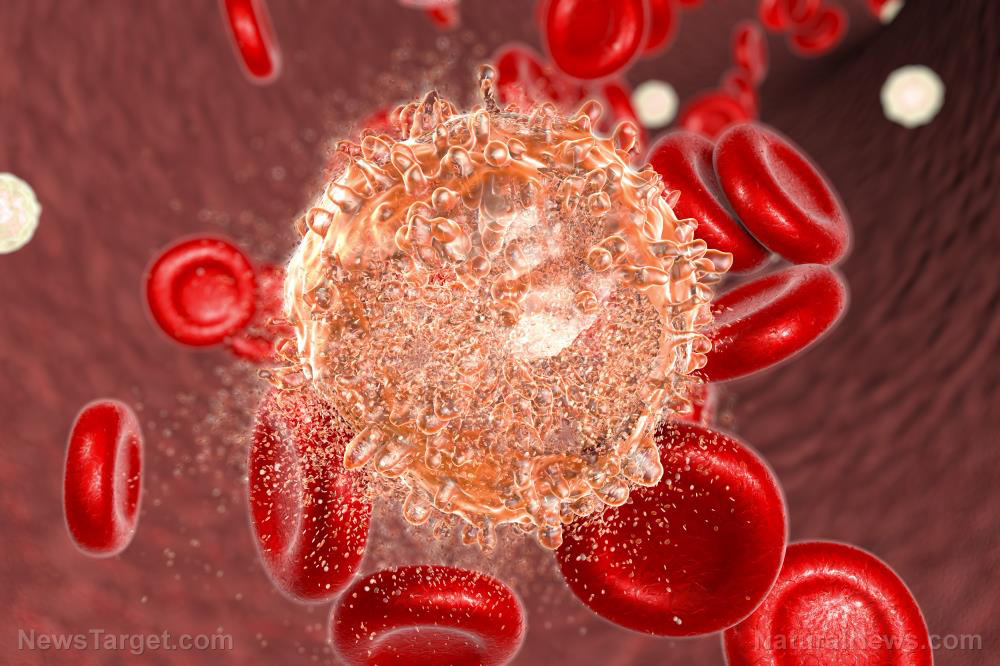Iron prevents anemia, but excess iron may be linked to health problems like diabetes, liver disease and heart problems
03/12/2020 / By Divina Ramirez

Iron is a vital mineral primarily found in red blood cells, and has many physiological roles to play in the human body. However, taking the right amount of iron is the key to its benefits. According to an international study published in the Public Library of Science Medicine, excess iron intake may increase the risk of health problems like acute posthemorrhagic anemia, cellulitis and tissue infections.
A team of researchers from Imperial College London, the University of South Australia (UniSA) and the University of Ioannina in Greece found evidence to suggest that high levels of iron can cause symptoms linked to Type 2 diabetes, such as cellulitis and abscess of the hands, arms, legs and feet.
The importance of iron
Iron is crucial for ensuring that bodily functions run smoothly, such as metabolism, the immune system and cognitive development, which is why iron deficiency can lead to significant health problems.
Anemia is one of the most common nutritional deficiencies linked to iron deficiency. According to the World Health Organization (WHO), anemia affects around 1.62 billion people worldwide, which corresponds to 24.8 percent of the population. Anemia is prevalent in preschool-age children, since their growing bodies require the most vitamins and minerals. Individuals with anemia are at an increased risk of extreme fatigue, dizziness and fast heartbeat. Similarly, individuals with alarmingly low levels of iron may be prone to persistent fatigue, unusual paleness and heart palpitations. Fortunately, iron deficiency can be avoided by eating iron-rich foods, like chicken liver, sardines, beef, clams, eggs, beans, spinach and lentils.
Moreover, iron has been found to regulate abnormal levels of “bad” cholesterol (LDL) in the bloodstream, thereby potentially reducing the risk of Type 2 diabetes, fatty liver disease and hypertension.
The dangers of excess iron intake
Despite the many health benefits of iron, excess levels can cause serious health problems linked to cardiovascular disease and liver complications. However, little is known about the causal effects of varying levels of iron in the body prior to the international study. Therefore, the researchers aimed to explore the broad clinical effects of varying iron status.
To determine the effects of iron, the researchers borrowed the data of 424,439 European individuals who were aged 40 to 69 from the UK Biobank Imaging Study in 2006. The participants had provided blood samples used for genotyping, which was collected by the Hospital Episode Statistics (HES).
Because iron status cannot be determined by any one particular factor, the researchers used randomly allocated genetic variants related to iron status to study its effects on a broad range of medical outcomes. The researchers found that genetic variants related to high levels of iron were associated with a lower risk of anemia and hypercholesterolemia. However, higher iron status was also linked to a higher risk of skin and tissue infections, and acute posthemorrhagic anemia, which is a blood disease that causes an individual to rapidly lose large volumes of hemoglobin. (Related: Study: Excess iron may increase your risk of developing bacterial skin infections.)
The researchers also found evidence to suggest that excess iron intake increased the risk of cellulitis significantly. Cellulitis is a common and potentially serious symptom of Type 2 diabetes in which the tissues of the lower legs may become painful, tender and swollen. However, cellulitis can also spread to affect the skin of the face, arms and feet.
Prior to the study, most of the available research on iron deficiency and overload dwelt on anemia and hemochromatosis, respectively. However, the study provided population-based evidence that explored the effects of high levels of iron only, and not necessarily an overload. According to co-lead author Dipender Gill from Imperial College London, the strength of the study lay in its ability to efficiently determine the effects of higher iron status on clinically relevant outcomes. As such, the study may be of value to experts and healthcare professionals studying iron and iron-related diseases.
For more about iron and its benefits, visit SupplementsReport.com.
Sources include:
Tagged Under: #nutrition, anemia, cellulitis, diabetes, food science, heart disease, iron deficiency, iron overload, minerals, nutrients, prevention



















